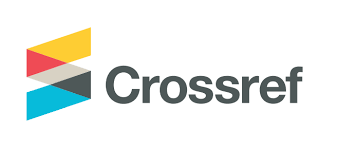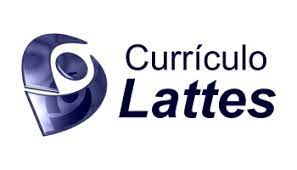Associação de diabetes mellitus tipo I e mucopolissacaridose tipo IV A: relato de caso
DOI:
https://doi.org/10.47456/rbps.v26isupl_1.44395Palavras-chave:
Diabetes mellitus, Mucopolissacaridose IV, autoimunidade, GlicosaminoglicanosResumo
Introdução: O diabetes mellitus do tipo I (DM1) é uma doença crônica causada pela deficiência de insulina devido a destruição das células beta pancreáticas produtoras por um mecanismo de autoimunidade. As mucopolissacaridoses (MPS) são distúrbios genéticos de herança autossômica recessiva, causados pela deficiência de enzimas responsáveis pela degradação de glicosaminoglicanos (GAGs). A MPS tipo IV A (Síndrome de Morquio, OMIM #253000) consiste na deficiência da enzima N-acetilgalactosamina-6-sulfato sulfatase, resultando em disfunção celular e manifestações clínicas. Relato de caso: Paciente, quatro anos, diagnosticada com DM1 aos dois anos, com autoanticorpos anti-GAD e anti-insulina, em insulinoterapia. Associado ao quadro, o exame físico evidenciou alterações fenotípicas como macrocrania, fronte proeminente, raiz nasal achatada, epicanto, columela curta, pescoço curto, tórax curto e abaulado, punho alargados e braquidactilia. Realizado painel de displasias esqueléticas com resultado compatível com MPS tipo IV A. Exames laboratoriais confirmaram o aumento de glicosaminoglicanos urinários e o ensaio enzimático de N-acetilgalactosamina-6-sulfatase confirmou a deficiência enzimática, concluindo o diagnóstico. Sendo assim, iniciada a terapia de reposição enzimática para prevenir complicações e possibilitar melhor prognóstico. Discussão: Embora raro, a associação de DM1 e MPS tipo IV A deve ser considerada como diagnóstico diferencial de indivíduos jovens com sintomas hiperglicêmicos crônicos associados a alterações fenotípicas e funcionais.
Downloads
Referências
Libman I, Haynes A, Lyons S, et al. ISPAD Clinical Practice Con¬sensus Guidelines 2022: Definition, epidemiology, and classifi¬cation of diabetes in children and adolescents. Pediatr Diabetes. 2022;23(8):1160-74. doi:10.1111/pedi.13454.
Brasil. Ministério da Saúde. Protocolo Clínico e Diretrizes Ter¬apêuticas do Diabete melito tipo 1. Brasília, DF: Ministério da Saúde; 2020. Available from: https://bvsms.saude.gov.br/bvs/pub¬licacoes/protocolo_clinico_terapeuticas_diabete_melito.pdf.
Melo K, Almeida-Pittito B, Pedrosa H. Tratamento do Diabetes Mellitus Tipo 1 no SUS. Diretriz Oficial da Sociedade Brasileira de Diabetes. 2023. DOI: 10.29327/5238993.2023-12, ISBN: 978- 85-5722-906-8.
Neves CJ, Neves S, Castro Oliveira A. Diabetes Mellitus Tipo 1. Revista Portuguesa de Diabetes. 2017;12(4):159-67.
OMIM. On-line Mendelian Inheritance in Man. Johns Hopkins University. [cited November 2023]. Available from: http://www. ncbi.nlm.nih.gov.
Wraith JE. The mucopolysaccharidoses: a clinical review and guide to management. Arch Dis Child. 1995 Mar;72(3):263-7. doi: 10.1136/adc.72.3.263. PMID: 7741581; PMCID: PMC1511064.
Tomatsu S, Fujii T, Fukushi M, Oguma T, Shimada T, Maeda M, et al. Newborn screening and diagnosis of mucopolysaccha¬ridoses. Mol Genet Metab. 2013 Sep-Oct;110(1-2):42-53. doi: 10.1016/j.ymgme.2013.06.007.
Brasil. Ministério da Saúde. Protocolo Clínico e Diretrizes Terapêuticas da Mucopolissacaridose Tipo IV A (Síndrome de Morquio A). Brasília, DF: Ministério da Saúde; 2019. Avail¬able from: https://www.gov.br/conitec/pt-br/midias/consultas/ relatorios/2019/relatrio_pcdt_mucopolissacaridosetipoiva_ cp_42_2019.pdf.
National Center for Biotechnology Information. Mucopolysac¬charidosis Type IVA - GeneReviews® - NCBI Bookshelf. [cited 5 Jan 2024]. Available from: https://www.ncbi.nlm.nih.gov/books/ NBK148668/.
Lee CL, Chuang CK, Chiu HC, Tu RY, Lo YT, Chang YH, et al. Clinical Utility of Elosulfase Alfa in the Treatment of Morquio A Syndrome. Drug Des Devel Ther. 2022 Jan 10;16:143-54. doi: 10.2147/DDDT.S219433.
Rush ET. Atypical presentation of mucopolysaccharidosis type IVA. Mol Genet Metab Rep. 2016 Jun 7;8:8-12. doi: 10.1016/j. ymgmr.2016.05.006. PMID: 27331011; PMCID: PMC4909711.
Ferreira JMD, Magalhães-Silva KA, Ventureli KA, Goulart LS, Rodrigues MT, Carneiro ZA, et al. Síndrome de Morquio A: diagnóstico diferencial na baixa estatura desproporcionada na infância. Resid Pediatr. 2022;12(1):1-6. DOI: 10.25060/residpe¬diatr-2022.v12n1-275.
Downloads
Publicado
Edição
Seção
Licença
Copyright (c) 2024 Revista Brasileira de Pesquisa em Saúde/Brazilian Journal of Health Research

Este trabalho está licenciado sob uma licença Creative Commons Attribution-NonCommercial-NoDerivatives 4.0 International License.
A Revista Brasileira de Pesquisa em Saúde (RBPS) adota a licença CC-BY-NC 4.0, o que significa que os autores mantêm os direitos autorais de seus trabalhos submetidos à revista. Os autores são responsáveis por declarar que sua contribuição é um manuscrito original, que não foi publicado anteriormente e que não está em processo de submissão em outra revista científica simultaneamente. Ao submeter o manuscrito, os autores concedem à RBPS o direito exclusivo de primeira publicação, que passará por revisão por pares.
Os autores têm autorização para firmar contratos adicionais para distribuição não exclusiva da versão publicada pela RBPS (por exemplo, em repositórios institucionais ou como capítulo de livro), desde que seja feito o devido reconhecimento de autoria e de publicação inicial pela RBPS. Além disso, os autores são incentivados a disponibilizar seu trabalho online (por exemplo, em repositórios institucionais ou em suas páginas pessoais) após a publicação inicial na revista, com a devida citação de autoria e da publicação original pela RBPS.
Assim, de acordo com a licença CC-BY-NC 4.0, os leitores têm o direito de:
- Compartilhar — copiar e redistribuir o material em qualquer suporte ou formato;
- Adaptar — remixar, transformar, e criar a partir do material.
O licenciante não pode revogar estes direitos desde que você respeite os termos da licença. De acordo com os termos seguintes:
- Atribuição — Você deve dar o crédito apropriado, prover um link para a licença e indicar se mudanças foram feitas. Você deve fazê-lo em qualquer circunstância razoável, mas de maneira alguma que sugira ao licenciante a apoiar você ou o seu uso.
- Não Comercial — Você não pode usar o material para fins comerciais.
- Sem restrições adicionais — Você não pode aplicar termos jurídicos ou medidas de caráter tecnológico que restrinjam legalmente outros de fazerem algo que a licença permita.

























